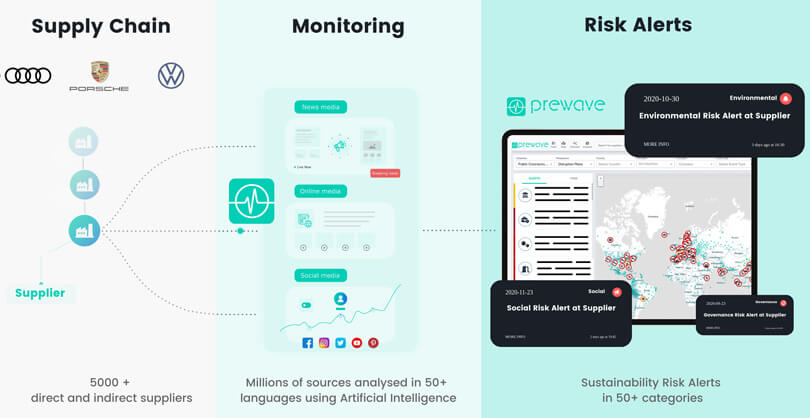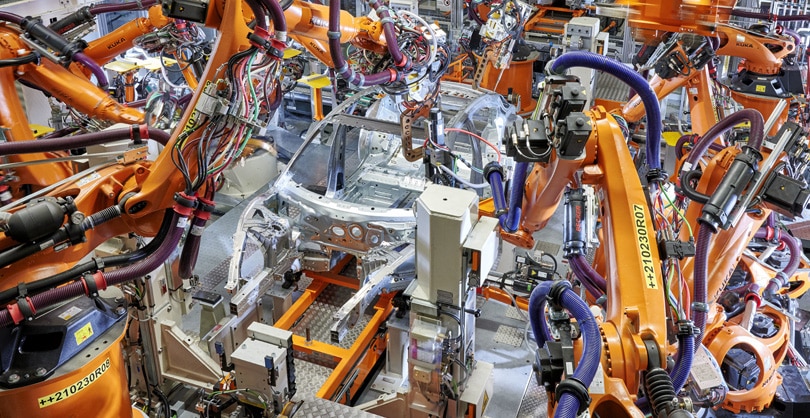


PRECISE DATA FOR GREATER SAFETY: AUDI WARNS ITS DRIVERS ABOUT SLIPPERY ROADS
>> Swarm data improve car-to-X service “local hazard information”
>> Around 1.7 million cars in the Group make up the swarm intelligence
>> New procedure detects minute changes in the coefficients of friction
>> Joint development between Audi and Car.Software organization, NIRA, and HERE
Audi is taking another step toward safer and more intelligent mobility. The premium carmaker is using high-precision swarm data for the first time to improve its car-to-X service “local hazard information”. The new version uses a car-to-cloud application that is based on a novel procedure for estimating the coefficient of friction on the basis of the wheel slip. The technology can detect minute changes in road surface adhesion, upload the data to the cloud to be processed, and warn drivers behind of road ice, for example, in near real time.
Since 2017, cars made by Audi have been able to warn each other about accidents, broken-down vehicles, traffic jams, road ice, or limited visibility. To do this, the car-to-X service “local hazard information” analyzes various data. These include interventions of the electronic stabilization control (ESC), rain and light sensors, windshield wipers, and headlights, as well as emergency calls and airbag triggering. Audi is now taking the next step and improving the service with high-precision swarm data to make the warning even faster and more precise. The brand with the four rings is the first manufacturer to use a patented solution from Swedish company NIRA Dynamics AB for this purpose. The two companies used this solution as a basis to develop the improved hazard information together with the Car.Software organization and HERE Technologies.
In the car, the system can estimate the coefficient of friction between the tires and the road surface on the basis of the wheel slip. To do this, it uses signals from the suspension, such as the wheel speed and acceleration values. It is permanently active in normal driving situations and not only at the physical limits that would require the suspension control systems to intervene. The sensor data is anonymized, both in the car itself and also in the cloud, hosted by NIRA Dynamics AB, to which it is transmitted. The aggregated data is combined with metadata such as current weather information and empirical values, and then transmitted by a NIRA server to service provider HERE Technologies. Here, the data is integrated in the HERE location platform that represents the road network as a precise three-dimensional model.
The HERE servers send the warning information to those cars that are in or headed toward areas with poor conditions. The driver sees the warning in the Audi virtual cockpit or on the optional head-up display.
Number of vehicles involved is a key success factor
The greater the number of vehicles that deliver the data, the better the system can learn, analyze, and create maps, and thereby inform or warn the drivers depending on the situation. This is the basic principle of swarm data and swarm intelligence – an area in which Audi has acquired extensive knowledge over the past years. In Europe, more than 1.7 million vehicles from the Volkswagen Group will supply current data for the hazard information service in 2021, and this number will increase to more than three million in 2022. This is a significant competitive advantage for the Volkswagen Group. The service is available in the new models from Audi, Volkswagen, SEAT, Škoda, Porsche, Bentley, and Lamborghini.
The Car.Software organization, a company of the Volkswagen Group, bore the main responsibility for the development. The project was designed in such a way that the greatest possible number of drivers could benefit from the safety advantages regardless of the group brand. This is also the first customer application as part of which vehicle data is used for this type of cutting-edge data analysis. “The project for improved hazard alerts is a good example of the great potential of cross-brand software development. Together with other Group brands and our strategic partners, we were able to develop a digital service within a few months while making use of our own software skills and economies of scale,” says Thomas Müller, Head of Advanced Driving Assistance Systems ADAS & Automated Driving AD at the Car.Software organization. “The improved hazard information service is just the beginning; we see wide-ranging potential for the future.”
Using current friction coefficient maps based on this data pool, municipalities can optimize their snow clearing service in real time, and also reduce the environmental impact by using less road salt. Driver assist systems can precondition themselves and adjust to the condition of the road with even greater precision, and the route guidance of the navigation system can take the road conditions into account in order to offer a more accurate computation of the expected time of arrival. In the car, control of the wheel slip can enable the development of tire maintenance services, for example, by detecting the level of wear as well as the performance level of the tire.
About NIRA Dynamics AB
The software company is headquartered in Linköping, Sweden, and is the market leader in the field of indirect tire sensor systems. NIRA uses the cutting-edge analysis of tire and vehicle data for the interaction between the vehicles and the road. Tire Grip Indicator (TGI), the patented application for sensor fusion, calculates the friction and then uploads the data to a cloud-based system for live mapping (Road Surface Information) for further processing and distribution.
About HERE Technologies
HERE, a location data and technology platform, moves people, businesses and cities forward by harnessing the power of location. By leveraging our open platform, we empower our customers to achieve better outcomes - from helping a city manage its infrastructure or a business optimize its assets to guiding drivers to their destination safely.
About the Car.Software organization
The Car.Software organization is a software company of the Volkswagen Group that bundles and expands its software skills for the purpose of transforming mobility. Its mission is to develop the leading technology stack for the automotive industry and thereby make the driving experience safer, more sustainable, and more comfortable. Roughly 5,000 engineers and developers worldwide are working on developing a uniform software platform and architecture for all brands and markets of the Volkswagen Group. The Car.Software organization works in competence centers for software in Berlin, Ingolstadt, Munich, and Seattle, as well as near Stuttgart and Wolfsburg.













